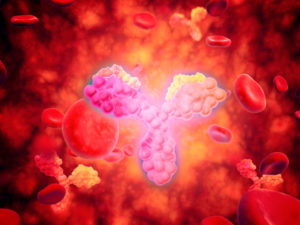Rh immunoglobulin therapy has been used for more than 60 years to prevent alloimmunization in Rh-negative pregnant women carrying an Rh-positive fetus. The exact mechanism, however, of prevention remains unknown. Using a mouse model, Liu et al investigated the mechanism of alloimmunization to the KEL antigen on red blood cells (RBCs) and described the first set of conditions in which immunoprophylaxis did not prevent alloimmunization. In this mouse model without the Fcγ antibody receptor (FcγR) or complement component 3 (C3), the animals developed anti-KEL antibodies despite immunoprophylaxis. Anti-KEL immunoprophylaxis was successful in single FcγR and C3 knock-out mice transfused with KEL RBCs, but double FcγR and C3 knock-out mice became alloimmunized. Based on lipophilic labeling, 40%-60% of KEL-RBCs were cleared within 24 hours after transfusion from wild type or single knock-out mice, while only 20% were cleared in the double knock-out mice. Furthermore, KEL antigen modulation of transfused RBCs in the presence of immunoprophylaxis occurred in wild type and single knock-out mice, but not double knock-outs. This suggests a redundancy in the antigen modulation pathway involving both the FcγR and C3 pathways. Further studies are required to determine the exact mechanism of immunoprophylaxis in vivo to develop novel methods to prevent alloimmunization.
Reference:
- Liu J, Santhanakrishnan M, Natarajan P, Gibb DR, Eisenbarth SC, Tormey CA, Siddon AJ, Stowell SR, Branch DR, Hendrickson JE. Antigen modulation as a potential mechanism of anti-KEL immunoprophylaxis in mice. Blood 2016;128: 3159-68.
- Westhoff CM. AMIS and antigen modulation: of mice and men. Blood 2016;128: 3026-8.

